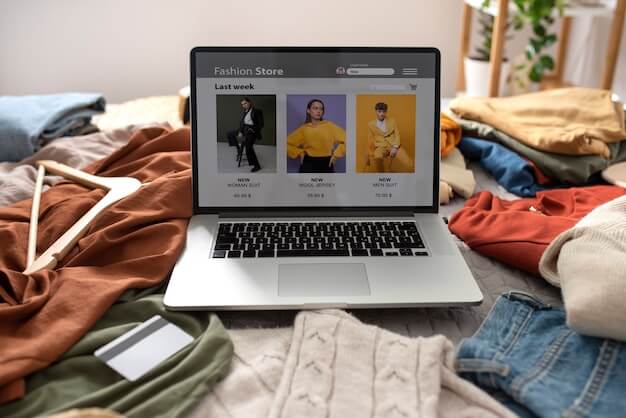The competition of fast fashion brands has become increasingly fierce. Now the focus of these brands' competition has shifted to fighting for online market share, and "visual search" provides a new way to obtain market share.
In 2018, Forever 21 began to provide the option of "Discover Your Style" on its network and mobile homepage through cooperation with the visual search engine Donde Search. Shoppers can click the icon representing their desired clothing features and specify various labels such as silhouette and color, so as to see the corresponding results in Forever 21's database.
In May of that year, a technology pilot was launched on the retailer's mobile application. The technology was so successful in improving the conversion rate and average purchase price that the company decided to "quickly track" its large-scale integration.

21 year old Alexa Ok believes that visual search is one of the most important innovations in e-commerce recently. "Visual search fills the gap between the convenience of online shopping and the rich discovery experience of traditional retail, allowing our customers to search clothing in the way they think - using vision instead of words," OK said. He added that his goal was to develop "the most intuitive and comprehensive shopping experience in the world".
Liant Zakay, founder and CEO of Donde, said that because this technology is a language agnostic that has nothing to do with language, it will help the company expand into the global market. In addition to the United States and Canada, Forever 21 currently conducts this business in Europe, Japan, South Korea and the Philippines.
"We are visual centered, not text-based, so users don't need to question the meaning of 'coat' or 'cold,'" said Jiwon Hong, CEO of YesPlz, a visual search startup. "It is important to provide an intelligent and interesting tool to help customers find their own style without getting upset."
Visual search has various forms of expression, usually refers to using images rather than words to tell search engines what you are looking for. Therefore, unlike typing "black A-line dress," a visual search may mean selecting illustrations that represent "dress," "A-line," and "black.". This may also mean using a photo of a person in a black dress - either taken with the shopper's camera or found online - to guide a search for similar styles.

Visual search is particularly profitable for fast fashion. In this fast changing fashion, categories change quickly. Shoppers are trying to imitate a specific trend - and they may not understand the language to find it.
Zakay of Donde said that as fast fashion brands have turned to e-commerce, they are no longer limited to the number of goods displayed in physical stores, but the increase of inventory is a challenge to consumers' search and retailers' classification. Moreover, because fast fashion can add new products so quickly, it often does not have enough history to recommend relevant products based on what other shoppers click on. Therefore, Donde has designed to automatically classify and detect similar items in the directory.
This technology is not new, but it has developed rapidly in the past year.
For example, Zara added a button for shoppers to find "similar products" among the products they are currently viewing. Asos, H&M and Boohoo Group (NastyGal) have started to provide shoppers with the function of uploading pictures that can match similar products in the brand category (so that it is easier to find clothes seen in fashion shows).
The platform is also using this technology. In addition to Pinterest, Instagram can identify individual items in the image and match them with items for sale. EBay has just added the existing image matching search function, allowing shoppers to choose "buy more products like this" after finding their favorite things on eBay. In July, Snapchat plans to build a visual search function with Amazon in Android applications.
Slyce CEO Ted Mann cooperated with Tommy Hilfiger to make live fashion shows available through visual search in the brand's applications. Slice provides visual search technology for 60 brands, including Macy's, Neiman Marcus and J.C. Penney, as well as European and Middle Eastern brands such as Landmark Group, an international retail group. Mann said that the report of independent retailers using Slyce showed that the use of visual search could lead to an increase of 20% for three consecutive months. He said that the utilization rate in the Middle East was "much higher than expected", but he admitted that "this is still an emerging technology. Voice search was there 10 years ago, when it was still on the edge, and then it began to become popular."
According to Pinterest, in the past year, the growth rate of visual search was close to 70%, and the number of visual searches per month exceeded 600 million. Amy Vener, director of Pinterest's retail vertical strategy, said that retail is rooted in visual experience, from window display to "tile" of the store. "With the rise of online shopping and mobile devices, visual experience has been sacrificed, which makes it harder for retailers to motivate shoppers to make unexpected discoveries," she said "People want to find and discover new ideas, even if they don't have the right words."

According to Salesforce's 2017 "Online Shoppers Report", 35% of the millennials said that they want to use images to generate product recommendations and search for goods in stores or digitally; The proportion of Generation X dropped to 30%; The proportion of baby boomers dropped to 23%. (In general, "visual search" responses are more popular than personalized recommendations and notifications, mobile wallets, chat robots or drones.) This is in line with Accenture's research in 2017, which found that 69% of young consumers are interested in buying based on visual search.
More use can translate into more sales. In an interview with eMarketer, Vener said about eMarketer's 2018 report on mobile retail applications, that shopping using visual search "translates into reduced price sensitivity" and greater desire to buy. This application made by Donde for Forever21 can support this conclusion. In the first month after the launch of "Discover Your Style", the average purchase price of Forever21 increased by 20%.
Zakay said: "This is more effective for retailers and more intuitive for consumers." "Visual search will be a way for people to search every visual product, whether it is a watch, chair or skirt."